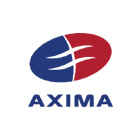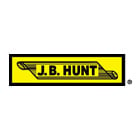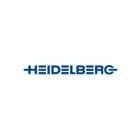Cloud Archive Storage Classes Guide - AWS, Azure, Google Cloud
Archive storage classes (also known as Cold storage classes) are specifically designed for data that is infrequently accessed yet requires long-term retention, such as legal records or essential business documents.
Unlike standard storage tiers that prioritize rapid access, archival storage emphasizes cost efficiency by providing significantly lower storage rates in exchange for longer data retrieval times. This makes it ideal for scenarios where immediate access is not required, but long-term retention and data security are essential.
In this article, we will examine the features and capabilities of archival storage classes offered by Amazon S3, Microsoft Azure, and Google Cloud Storage.
Table of Contents
Amazon Archive Storage Classes
Amazon S3 storage is categorized into two primary groups based on access patterns. The first, S3 storage classes, includes options like Standard, Standard-IA, and Intelligent-Tiering, which are optimized for data requiring frequent to infrequent access. The second, Archive storage classes, consists of Glacier Instant Retrieval, Glacier Flexible Retrieval, and Glacier Deep Archive, each tailored for long-term data retention with varying costs and retrieval speeds.
Standard S3 Tiers (For Comparison)
S3 storage classes, such as Standard, Standard-IA, One Zone-IA, and Intelligent-Tiering have higher storage costs but provide instant access with minimal retrieval charges, making them suitable for data that is accessed frequently or occasionally.
Glacier Instant Retrieval
This class is intended for long-term archival data that is rarely accessed but must be retrievable within milliseconds. It is the only Glacier class that provides immediate access to stored objects.
- Storage Costs: The highest among the Glacier classes, approximately four to five times more expensive per GB than Glacier Deep Archive, and slightly higher than Glacier Flexible Retrieval.
- Retrieval Costs: Also higher compared to both Flexible Retrieval and Deep Archive, due to the instant access it provides.
Glacier Flexible Retrieval
Formerly known as Glacier, this class provides cost-effective archival storage for data that is infrequently accessed but requires flexible retrieval options.
- Storage Costs: Up to 80% lower per GB than the S3 Standard storage class and about 10% lower than Glacier Instant Retrieval.
- Retrieval Costs: Lower than Instant Retrieval but higher than Deep Archive, with pricing that varies depending on the retrieval method.
Retrieval options include:
- Standard retrievals: Default method, typically takes 3 to 5 hours.
- Bulk retrievals: Most cost-effective, ideal for large data sets, with access times of 5 to 12 hours.
- Expedited retrievals: Provides near-immediate access for small datasets, usually within 1 to 5 minutes.
Glacier Deep Archive
This is Amazon S3’s most cost-efficient storage class, intended for long-term data retention where retrieval is infrequent and longer access times are acceptable.
- Storage Costs: Up to 70-75% lower cost per GB compared to Glacier Flexible Retrieval and Glacier Instant Retrieval.
- Retrieval Costs: Lowest among all Glacier classes, especially with bulk retrieval method.
Retrieval options include:
- Standard retrievals: Typically completed within 12 hours.
- Bulk retrievals: The most economical option, with retrieval times of up to 48 hours.
- Expedited retrievals: Not supported in Glacier Deep Archive.
For detailed information on pricing for various Amazon storage classes, refer to the S3 pricing page.
Azure Blob Access Tiers
Microsoft Azure Blob Storage offers two primary categories for data storage - Online and Archive. Azure’s online access tiers include Hot, Cool, and Cold, which are designed for data requiring frequent or occasional access. While the Archive tier is an offline storage option optimized for long-term retention, where retrieval latency of several hours is acceptable.
Hot Tier
The Hot tier is optimized for frequently accessed data, providing low-latency access to stored blobs. It is ideal for scenarios involving frequent read and write operations. Although the Hot tier enables free and immediate data retrieval, it incurs higher storage costs compared to other tiers.
Cool Tier
This tier is designed for data that is accessed infrequently but still requires rapid access when needed. Data in this tier should be stored for a minimum of 30 days to avoid early deletion charges.
- Storage Costs: Nearly 40% lower per GB than the Hot tier.
- Retrieval costs: Offers moderate retrieval charges compared to Cold and Archive tiers.
Cold Tier
This tier is designed for data that is infrequently accessed or modified but must remain immediately available when required. Data in this tier must be kept for at least 90 days. It offers lower storage costs than the Cool tier but incurs higher retrieval charges.
- Storage Costs: Approximately 60% lower per GB than the Cool tier and up to 80% less than the Hot tier.
- Retrieval costs: Nearly three times higher per GB compared to the Cool tier.
Archive Tier
The Archive tier is an offline storage option designed for long-term retention of rarely accessed data, requiring a minimum storage duration of 180 days. It provides the lowest storage costs of all Azure Blob Storage tiers but does not support direct read or write operations. To access data, blobs must first be rehydrated into an online tier (Hot, Cool, or Cold). Rehydration can be requested with either Standard or High Priority retrieval method, each with different costs and retrieval times.
- Storage Costs: Up to 97% lower per GB compared to the Cold tier.
- Retrieval costs: Standard-priority retrieval is nearly twice as expensive as the Cool tier, while High-priority retrieval can be up to 5 times more costly than Standard retrieval.
For detailed information on Azure Blob Storage pricing, please refer to their pricing page.
Google Cloud Storage Classes
Google Cloud Storage offers four storage classes - Standard, Nearline, Coldline, and Archive, each designed to address specific storage needs based on access frequency and retention requirements.
Standard Storage
The Standard Storage class is designed for frequently accessed data, providing low-latency, high-performance access. It is ideal for use cases requiring immediate access to data.
- Storage Costs: Highest among all classes, nearly three times more expensive than Nearline storage.
- Retrieval Costs: No retrieval charges. It also offers the lowest operational costs for activities such as reading, writing, listing, and deleting objects.
- Note: Operational costs are categorized into Class A operations (object uploads, metadata updates, bucket listings) and Class B operations (object downloads, gets, metadata retrieval).
Nearline Storage
Nearline Storage is a cost-effective option for data that is accessed less than once per month. A minimum storage duration of 30 days is required.
- Storage Costs: Approximately 50% lower per GB, per-month basis than Standard Storage.
- Retrieval & Operational Costs: While storage is more economical, retrieval incurs additional charges, and Class A and Class B operation costs are higher than Standard Storage.
Coldline Storage
Coldline Storage is intended for data accessed less than once per quarter, with a 90-day minimum storage duration. It is suitable for data that must be retained but is rarely used.
- Storage Costs: About 80% lower per GB, per-month basis than Standard Storage and 60% lower than Nearline.
- Retrieval Costs: Retrieval fees are about 5 times higher than Nearline. Class A and Class B operations charges are substantially higher than Standard and Nearline storage classes.
Archive Storage
The Archive Storage class is optimized for data that is rarely accessed but must be stored long-term. It offers the lowest storage cost of all Google Cloud Storage classes, with a 365-day minimum storage duration. Unlike traditional archival storage classes, data in this tier remains instantly retrievable, with millisecond access times, as it is stored on the same highly available infrastructure as other classes (such as Standard and Nearline storage).
- Storage Costs: Up to 95% cheaper than Standard Storage and 70% cheaper than Coldline on a per-GB, per-month basis.
- Retrieval Costs: Archive has the highest per-GB retrieval fee, approximately three times higher than Coldline, and incurs higher Class A and Class B operation charges compared to other classes.
For detailed information on the pricing for various Google Storage classes, refer to their Cloud Storage pricing page.
Integration with SyncBackPro
Backup and Restore with Amazon Archive Storage Class
With SyncBackPro, you can upload objects directly to Amazon archive storage classes by selecting the desired storage class in the Amazon S3 Profile > Cloud > Advanced settings, or you can automate transfers from S3 storage classes (Standard or Standard-IA) to Archive storage classes using S3 Lifecycle policies.
Retrieving data from Amazon Archive storage classes (Glacier Flexible Retrieval or Glacier Deep Archive) is a two-step process. First, you must initiate a restore request to create a temporary copy of the object in an S3 storage class, specifying the retrieval tier (expedited, standard, or bulk). The restore process may take several hours, depending on the selected priority level. Once the restore is complete, the second step is to rerun the SyncBackPro profile to download the restored object from S3 class to your destination. For Glacier Instant Retrieval, objects are immediately accessible without the need for a restore request.
Backup and Restore with Azure Archive Tier
With SyncBackPro, you can back up directly to the Azure Archive tier by selecting it as the target storage class, or you can automate the transition of data from Hot or Cool tiers to the Archive tier using Azure Blob Storage lifecycle management policies.
Restoring data from Azure Archive storage involves a two-step process. First, you must initiate a rehydration request to move the archived object temporarily to an online tier (Hot or Cool), specifying the retrieval priority (Standard or High). Rehydration can take several hours depending on the chosen priority. Once the object has been rehydrated, the second step is to rerun the SyncBackPro profile to download the restored data to your destination.
Backup and Restore with Google Archive Storage Class
SyncBackPro supports direct backups to the Google Archive storage class. To back up data to the Archive class, create a Google Cloud profile, select a bucket configured with Archive as its default storage class from the Cloud Connections Details page, configure the remaining profile settings, and then run the profile.
Unlike Amazon or Azure Archive Storage Classes, restoring from Google Archive storage does not require a multi-step process or rehydration. Objects stored in the Archive class are available for retrieval within milliseconds. You simply run the Google Cloud profile in restore mode to download the data from the Archive bucket to your destination.
Conclusion
Amazon S3, Azure, and Google Cloud services provide storage options that balance cost with access performance. Hot tiers are designed for data requiring frequent and immediate access, Cold tiers for infrequently accessed data with scheduled retrieval, and Archive tiers for the long-term retention of rarely accessed data. Choosing the right storage class is essential to ensure that data access frequency and retention requirements are effectively balanced.
Ready to Optimize Your Cloud Storage?
Try SyncBackPro for seamless integration with all major cloud archive storage providers.
Download Free Trial















